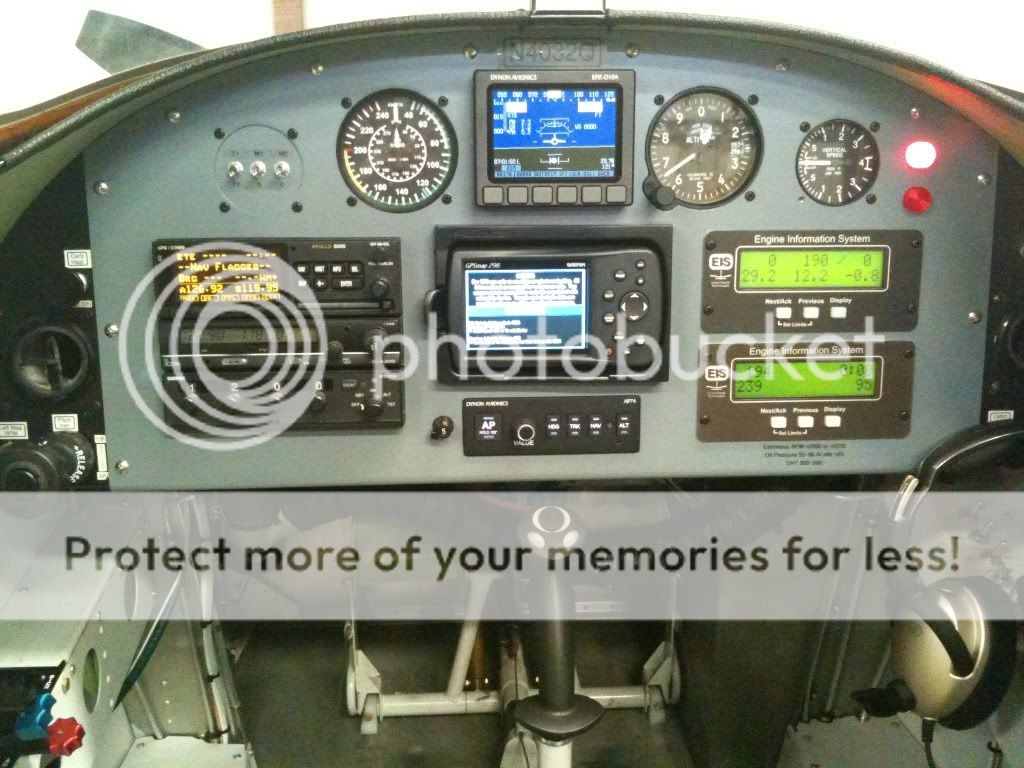With some of the recent threads on IFR approaches and panel instruments, I thought it would be a good time to ask for opinions.
I have 400 hours and enjoy flying more everyday. Now that I have a plane that can travel cross country I want to start my IFR training. I plan to upgrade my panel to IFR and use my plane to train in. I am not looking for the minimum instruments but I am limited on space. My fear is, with little IFR experience, I don't want to upgrade my panel and them realize I cold have made better choices.
I like the layout so I am hoping I don't have to start with a new panel.
I am planning on removing the GX65 replace it with a 430w, install a 2 1/4 CDI above it in the 2 1/4 knockout where the audio switches are now (I have a two station intercom located on my right side so I don't need a audio panel). Relocate the slave GR4000 to a lower sub panel this will give me room for two 2 1/4 gauges. Add a 2 1/4 Trutrak ADI. That leaves me room for one more 2 1/4 gauge. I will also add a marker beacon (somewhere) and a heated pitot tube (AOA).
1) Is there anything else I need to add?
2) Will I have enough redundancy?
3) Is having a Dynon auto pilot a mistake?
4) Am I making a mistake training in my 8a?
Thanks, for any input

I have 400 hours and enjoy flying more everyday. Now that I have a plane that can travel cross country I want to start my IFR training. I plan to upgrade my panel to IFR and use my plane to train in. I am not looking for the minimum instruments but I am limited on space. My fear is, with little IFR experience, I don't want to upgrade my panel and them realize I cold have made better choices.
I like the layout so I am hoping I don't have to start with a new panel.
I am planning on removing the GX65 replace it with a 430w, install a 2 1/4 CDI above it in the 2 1/4 knockout where the audio switches are now (I have a two station intercom located on my right side so I don't need a audio panel). Relocate the slave GR4000 to a lower sub panel this will give me room for two 2 1/4 gauges. Add a 2 1/4 Trutrak ADI. That leaves me room for one more 2 1/4 gauge. I will also add a marker beacon (somewhere) and a heated pitot tube (AOA).
1) Is there anything else I need to add?
2) Will I have enough redundancy?
3) Is having a Dynon auto pilot a mistake?
4) Am I making a mistake training in my 8a?
Thanks, for any input





